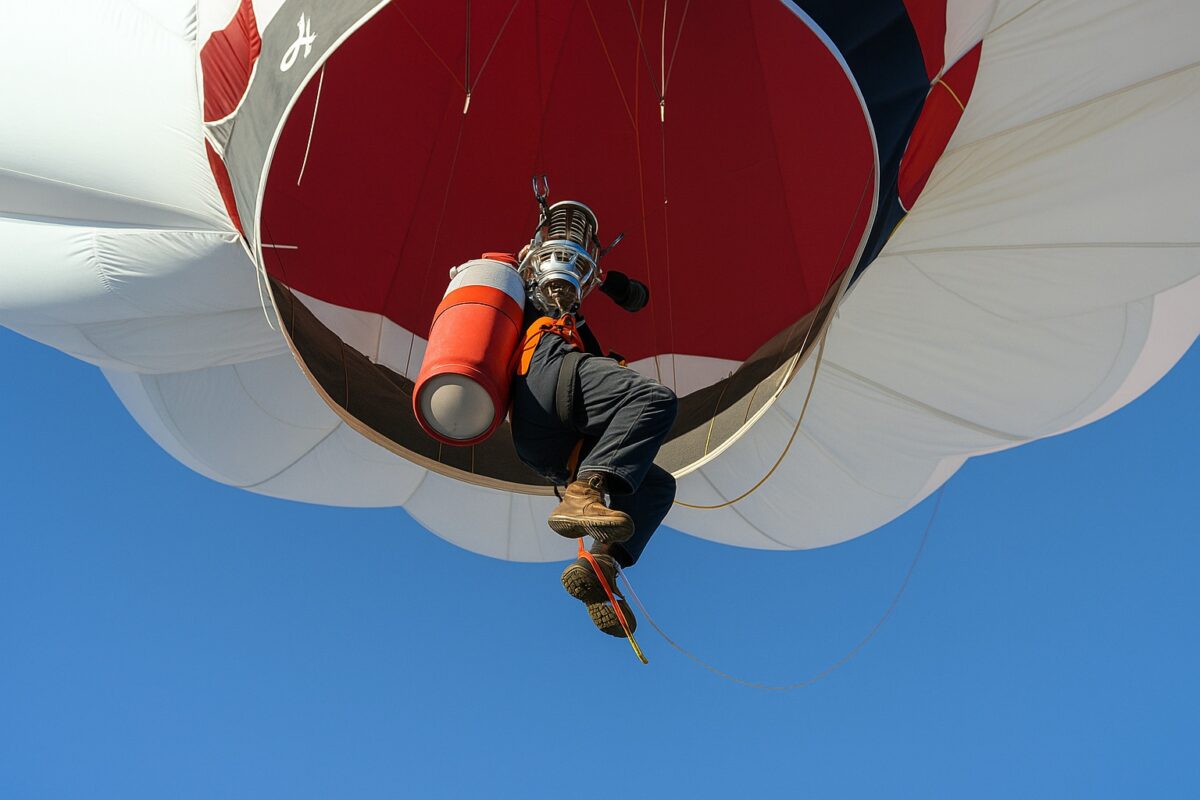General information about Cloudhopper systems, including basic questions, technical details for experienced balloonists, and comparisons of advantages and disadvantages with conventional hot-air balloons.
General FAQ
Q: How long or how far can a Cloudhopper fly?
A: Flight duration depends on the system and conditions. Most Cloudhoppers carry enough fuel for about one to one and a half hours of flight.
Q: Is a license required to fly a Cloudhopper?
A: Licensing requirements vary by model and region. Many systems follow the same regulations as other hot-air balloons and require certification from the relevant aviation authority.
Q: What is the purchase cost of a Cloudhopper?
A: New systems usually cost between $15,000 and $20,000. Used equipment appears on the market occasionally, but a qualified technician should inspect it before purchase to confirm airworthiness.
Q: What are the operational costs of a Cloudhopper?
A: A typical one-hour flight uses about ten gallons of propane. Maintenance, insurance, and storage costs depend on local conditions and the pilot’s setup.
Q: How can someone learn to fly a Cloudhopper?
A: Most pilots start by training with conventional hot-air balloons. Depending on the system’s design and weight, a license may be necessary. Learning directly from an experienced pilot helps build skill and ensures safety.
Balloonist FAQ
Q: Is the fuel tank heavy?
A: The pilot supports little of the tank’s weight once the balloon inflates. The lift from the envelope offsets most of the system’s weight during setup and flight.
Q: Why is a Cloudhopper called an ultralight?
A: A single-person balloon weighing under 155 pounds qualifies as an ultralight vehicle under FAA Part 103. Ultralight categories include hang gliders, paragliders, and small airplanes. Pilots flying ultralights do not need formal licenses, and these aircraft do not require registration or airworthiness certificates.
Q: What is Part 103?
A: Part 103 of the Federal Aviation Regulations defines ultralight vehicles and outlines their operating limits. It restricts flight in controlled or congested airspace and specifies visibility requirements for visual flight conditions.
Q: Are all Cloudhoppers ultralights?
A: No. Systems that exceed 155 pounds, such as those with 15-gallon fuel tanks, fall under standard aircraft regulations in Part 91. In the United States, Cloudhoppers without type certificates register as experimental aircraft and operate under defined limits.
Advantages and Disadvantages
Advantages
- Compact design allows storage and transport in a car or sport-utility vehicle.
- A single pilot can manage setup and inflation without assistance in calm conditions.
- Responsive handling enables rapid ascents and descents compared with conventional balloons.
- Landing in smaller or confined areas is often possible.
- Pilots can reposition the balloon in light winds or carry it short distances when deflated.
- Body movement helps absorb landing impact, reducing stress on the equipment.
- A single person can secure the balloon after landing in moderate winds.
- Disadvantages
- Windy conditions make inflation challenging because the burner angle and small mouth size demand precise control and teamwork.
- The pilot receives less protection during high-wind landings than in a basketed balloon, limiting safe operation in windy regions.
- Operating a Cloudhopper requires moderate physical effort. Entry, inflation, and landing demand flexibility and coordinated movement.



